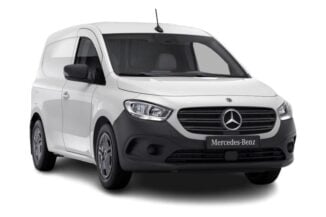If you are looking for a van, you’ll not only have to choose the right type, size, and specs but also decide between the FWD vs RWD model. Understanding the differences between the Front Wheel Drive and Rear Wheel Drive configurations is essential in determining which one is best suited for your specific needs.
In this comprehensive blog, we will delve into the characteristics, advantages, and limitations of both FWD and RWD van drivetrains. By the end, you will have a clearer understanding of their performance, handling, efficiency, and suitability for various driving conditions. Whether you’re a beginner seeking fundamental knowledge or an experienced van driver looking to maximise the potential of your commercial vehicle, this guide will provide you with the vital information necessary.
What is a drivetrain?
The drivetrain of your van is more than just a single component. It is the whole system that includes interconnected parts working in harmony with the engine to set the wheels and other components in motion. Typically, the drivetrain includes components like the transmission, differential, driveshaft, axles, CV joints, and wheels.
What’s the difference between Front-Wheel Drive and Rear-Wheel Drive?
In essence, Front-Wheel Drive (FWD) directs engine power to the front wheels. In a Rear-Wheel Drive (RWD) setup, the engine power is transferred to the rear wheels. However, the RWD vs FWD goes beyond which wheels receive power. While it’s true that front and rear-wheel drivetrains vary in how power is distributed, they also possess unique characteristics that influence their on-road behaviour, especially in challenging weather conditions. Before delving into specific driving scenarios and determining the ideal layout, let’s start by explaining each drive system in more detail.
Front Wheel Drive – advantages and disadvantages
Front Wheel Drive is a type of drivetrain configuration where power is transmitted from the engine to the front wheels of a vehicle. In a Front-Wheel Drive system, the engine’s power is delivered to the front wheels. They are responsible for both propelling the vehicle and steering it. In a typical FWD setup, the engine and transmission are positioned at the front of the vehicle. The engine transfers power to the transaxle, which combines the functions of the transmission and differential. The power is then sent to the front wheels. This layout eliminates the need for a separate driveshaft and rear differential.
When the driver accelerates, the engine’s power is transferred through the transaxle to the front wheels. This causes them to rotate and propel the vehicle forward. As the front wheels also handle the steering, they provide the necessary traction and control for manoeuvring the vehicle in different directions.
Advantages of a FWD van
- Lower vehicle weight results in better fuel economy
- The weight of the engine and drivetrain components concentrated over the front two wheels helps provide better traction on the road in wet and slippery conditions
- Lack of a rear driveshaft and differential increases the interior space
- Cheaper to buy or lease as fewer components
Disadvantages of a FWD van:
- Less fun to drive because they rely on “pulling” rather than “pushing” for power delivery
- More wear to the front tyres and suspension due to their steering responsibilities
- Front-wheel drive vehicles tend to be nose-heavy and therefore not that sharp when turning
- Chances of oversteering during high-speed cornering
- Steering effectiveness is reduced when the front wheels lose traction
- Usually less well-made
Because of their stability and efficiency, FWD drivetrains are commonly used in daily-driven commercial vehicles such as small and medium vans, as well as in the majority of cars. The best examples of FWD vans are the Citroën Berlingo, Peugeot Expert, or Citroën Dispatch. If you’re looking for a large front-wheel-drive van, then your best option could be the Peugeot Boxer.
Rear Wheel Drive – advantages and disadvantages
In contrast to FWD vehicles, where power is sent to the front wheels, the RWD systems transmit engine power to the rear wheels. In RWD vehicles, the front and rear wheels work together as a team. The rear wheels provide power while the front wheels handle the steering. This Rear-Wheel Drive setup offers improved steering capabilities compared to Front-Wheel-Drive vehicles, where the front wheels are responsible for both power delivery and steering.
These days, most vehicles have RWD system because it offers better handling on dry surfaces. The rear-wheel drive system uses a long driveshaft that transmits power from the engine at the front of the vehicle to the differential at the rear axle. The driveshaft connects to the transmission and differential via universal joints, which help the driveshaft rotate efficiently. The rotation motion of the drive shaft turns the differential, and then the differential rotates the wheels. RWD allows you to “steer with the throttle” and control how much the vehicle rotates using the gas pedal. In addition, this also lets you power out of corners better than in an FWD vehicle and carry more speed through longer turns. You have to be very careful, as it’s easy to spin the van out. Lack of experience makes spinning out especially difficult to recover from if you’re not used to driving a Rear-Wheel Drive vehicle.
Advantages of Rear-Wheel Drive van:
- Rear tyres have more grip on a dry surface, which means better traction and handling in dry conditions
- Even weight distribution results in better balance and more stability when it comes to things like handling around corners
- Can handle more power
- Usually better-made vehicles
- Sporty and more fun driving experience
- Better for towing
- Higher payload capacity
- Easier to drift (not that you should)
Disadvantages of a RWD van:
- More expensive as more parts are used
- Less compact
- Easy to oversteer
- Increased vehicle weight because the components are heavier
- Inexperienced drivers can find it more challenging to drive
- Traction in slippery conditions is not great
Most high-performance cars or sports cars and large vans such as the Ford Transit, Vauxhall Movano, and Renault Master use rear-wheel drive systems. Meanwhile, the only medium van offering a choice of RWD models is the Mercedes Vito.
FWD vs RWD: which one is better?
When it comes to choosing Front-Wheel Drive vs Rear-Wheel Drive, the decision ultimately depends on your specific needs and preferences. If factors such as fuel economy, traction in slippery conditions, and interior space are your priorities, then a front-wheel drive is likely to be a better choice. A FWD model might also better suit you if you’re budget-conscious. On the other hand, if considerations like towing and payload capacity, as well as potentially better handling, are more important, then Rear Wheel Drive might be better than Front Wheel Drive.
AWD and 4WD
In your search for the perfect vehicle, you may come across two additional drivetrains: Four-Wheel Drive and All-Wheel Drive. While all-wheel drive (AWD) is not commonly found in commercial vans, Ford offers some AWD models in their Transit range. On the other hand, Four Wheel Drive (4WD or 4×4) is the standard drivetrain for pickup trucks. This includes models like the Ford Ranger or Toyota Hilux. Furthermore, the 4-Wheel Drive can also be found in some popular small vans like the Vauxhall Combo Cargo.










